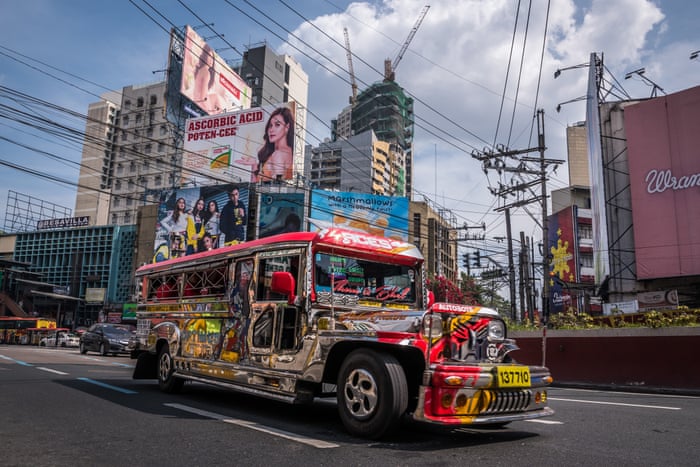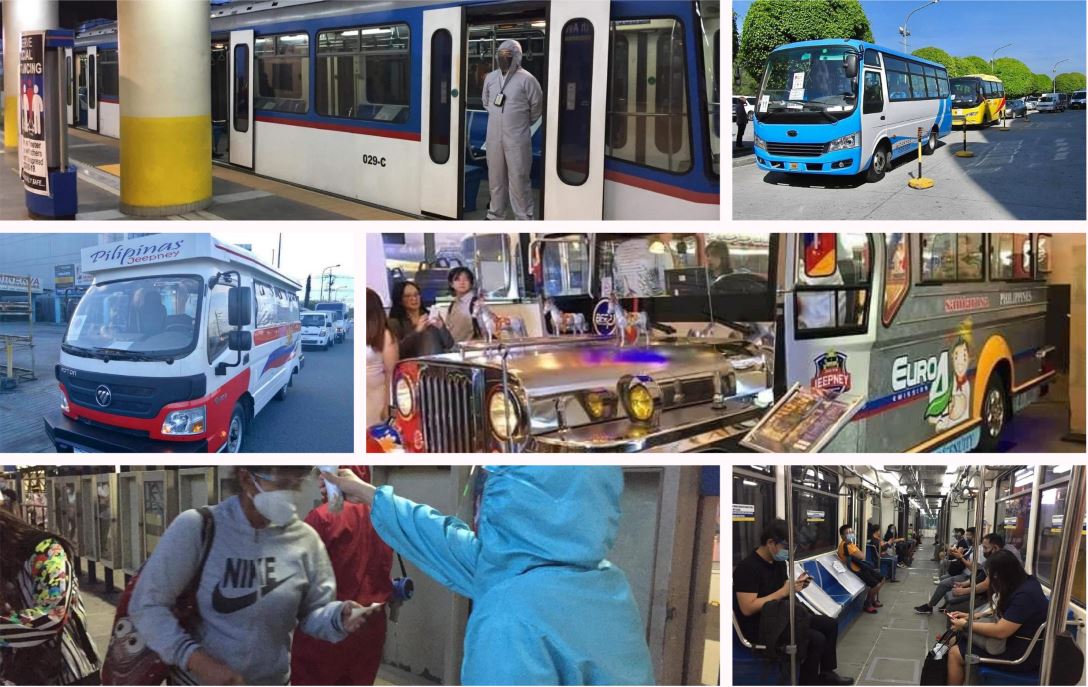Transit Advertising Philippines: Reach Thousands of Commuters Daily
Understanding the Role of Transit Advertising in Enhancing Brand Presence and Consumer Involvement
Transit advertising and marketing has actually emerged as an essential element in the advertising and marketing landscape, supplying one-of-a-kind chances for brand names to boost their exposure and engage customers effectively. With the capacity to get to a captive and varied audience during their everyday commutes, these advertising and marketing strategies are not just about visibility; they have to do with producing purposeful connections with possible consumers. As we discover the multifaceted benefits and ingenious strategies within transit advertising and marketing, it becomes necessary to take into consideration how these elements collectively affect customer assumption and behavior, raising questions about their lasting influence on brand name loyalty.
Definition of Transit Advertising
Transit marketing refers to the practice of advertising items, services, or brands through advertisements placed around public transport systems. This type of advertising encompasses a selection of positionings, consisting of posters on buses and trains, electronic displays at transit terminals, and covers on the exterior of automobiles. It aims to get to a varied audience, taking advantage of the high foot website traffic connected with public transportation.
Transportation advertising is strategically placed to catch the focus of travelers, who commonly spend substantial time traveling or waiting. By incorporating advertisements right into the everyday routines of people, brands can develop a long lasting impression and foster brand recognition. The tool is particularly reliable in urban settings, where public transport is a key setting of travel.
In addition, transit advertising and marketing can help with local targeting, enabling organizations to reach details demographics based upon transit courses and terminal places. As city populations expand and the use of public transportation rises, this marketing method has actually gained importance as a vital element of incorporated advertising strategies. The vibrant nature of transit marketing, incorporated with its ability to engage customers in a restricted environment, emphasizes its significance in contemporary marketing techniques.
Advantages of Transit Marketing
The efficiency of transportation advertising lies in its capacity to supply a wide range of advantages to brands seeking to improve exposure and involvement. Among the key benefits is the extensive reach it provides; transportation advertisements can effectively target diverse demographics across urban areas, reaching both commuters and pedestrians alike. This broad exposure dramatically boosts brand awareness.
An additional benefit is the high frequency of impressions. As transportation cars travel along well established paths and quit at numerous places, they produce repeated exposure that reinforces brand messages. This regularity cultivates familiarity, which is important in consumer decision-making.
Transit advertising is likewise cost-efficient contrasted to other media platforms. Offered its large reach and capacity for high perceptions, brands typically experience a lower cost per thousand impacts (CPM), optimizing their advertising budget.
Moreover, transportation advertisements can create a feeling of neighborhood connection. By aligning with neighborhood transportation systems, brands can resonate with local audiences and cultivate a sense of local satisfaction. This localized method enhances brand loyalty and involvement, making transportation advertising and marketing an engaging choice for services intending to solidify their existence on the market.

Effective Approaches for Transportation Projects
To make best use of the influence of transit projects, brands need to utilize critical preparation and implementation customized to their target market. Initially, recognizing the market attributes of the audience making use of public transit is essential. This enables brand names to produce personalized messaging that reverberates with possible customers.
Following, picking the right transit mediums is important. Whether utilizing bus wraps, metro posters, or digital displays, each tool has distinct benefits that can enhance presence. For example, lively visuals on bus covers can draw in focus, while digital advertisements can be updated often to mirror timely promos.
Moreover, incorporating a natural branding technique throughout transit platforms guarantees uniformity and reinforces the brand name's identification. Utilizing unforgettable taglines and attractive styles will certainly strengthen brand recall among travelers.
Last but not least, timing is a vital consider carrying out successful transit projects. Releasing projects during optimal travel hours or local events can dramatically enhance presence and interaction. By using these approaches, brands can effectively harness the capacity of transportation marketing, fostering greater awareness and connection with their target audience. Ultimately, a well-executed transportation project can drive substantial growth in brand name visibility and consumer engagement.

Measuring Effect and Involvement
In evaluating the efficiency of transportation marketing campaign, exact dimension of effect and interaction is necessary for brand names looking for to optimize their marketing techniques. Metrics such as reach, frequency, and impacts provide fundamental data to analyze visibility. Assessing these aspects helps determine the amount of potential clients are exposed to the ads during their daily commutes.
Engagement can be more determined via consumer interactions, such as website web traffic, social media sites points out, and direct feedbacks to calls-to-action featured in the advertisements. Using tools like QR codes or special URLs can help with tracking of customer behavior directly linked to transit projects. Surveys and responses mechanisms also work as useful techniques address to collect qualitative data on customer understandings and recall of the promotion.
In addition, advanced analytics and attribution designs can correlate transportation exposure with succeeding getting habits, supplying insights right into the return on financial investment. By using a detailed technique that incorporates quantitative and qualitative steps, brands can create a nuanced understanding of their transit marketing effect. Eventually, this data-driven strategy makes it possible for brands to fine-tune their campaigns, guaranteeing they resonate successfully with target audiences and improve total brand exposure.
Study of Successful Projects
Successful transportation ad campaign offer as compelling examples of just how reliable techniques can boost brand exposure and interaction. Transit Advertising Philippines. One remarkable case is the "I Love New York" project, which changed the city's image and brought in millions of travelers. By making use of train advertisements, billboards, and bus wraps, the Visit Your URL campaign produced a solid, cohesive brand name identity, causing a considerable uptick in tourism and regional business patronage
One more exemplary project is Coca-Cola's "Share a Coke" campaign, which leveraged transportation advertising and marketing to individualize the brand name experience. By including prominent names on advertising materials throughout different transportation platforms, Coca-Cola fostered a deeper emotional link with customers, motivating them to share their experiences on social networks.
Additionally, the "Got Milk?" project successfully made use of public transport ads to reach a broad target market, strengthening the message of the relevance of milk in a balanced diet regimen. The campaign saw a quantifiable increase in milk consumption in target demographics.
These study highlight that when executed attentively, transportation advertising and marketing can dramatically improve brand exposure, foster consumer involvement, and drive measurable results, demonstrating its essential function in modern marketing approaches. - Transit Advertising Philippines
Final Thought
In conclusion, transit advertising works as an essential tool for improving brand name presence and promoting customer engagement. By making use of tactically positioned advertisements within public transportation systems, brands can properly reach varied audiences and reinforce recognition with constant exposure. The execution of targeted messaging and innovative techniques better magnifies the impact of transportation campaigns. Ultimately, the capacity to gauge involvement and examine successful instance researches underscores the performance of transportation advertising in Recommended Reading driving brand name commitment and customer interactions.
Transit advertising has actually emerged as a critical component in the advertising and marketing landscape, providing one-of-a-kind chances for brands to boost their exposure and involve consumers properly.Additionally, transportation marketing can facilitate localized targeting, enabling companies to get to particular demographics based on transit courses and terminal areas.In reviewing the efficiency of transportation advertising campaigns, exact measurement of influence and engagement is vital for brand names seeking to maximize their advertising methods.Successful transit marketing projects offer as engaging examples of just how reliable strategies can boost brand name visibility and engagement.In final thought, transportation advertising serves as a crucial tool for enhancing brand name exposure and cultivating customer involvement.